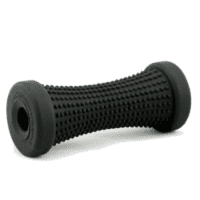Corked Thigh

Article by John Miller

What is a Corked Thigh?
A corked thigh, often referred to as a dead leg, quadriceps contusion, or Charley horse, occurs when an opponent tackles you, forcing your thigh muscles against the underlying bone. This impact causes significant bruising and bleeding around the muscle. Many athletes in contact sports experience a corked thigh.
The Two Types of Contusion
Contact sports like football or rugby frequently see contusions, or bruises. Athletes can experience two main types: intramuscular and intermuscular.
An intramuscular contusion results from the tearing of the muscle within its surrounding sheath. This injury can lead to a significant loss of muscle function, power, and enduring pain. Recovery from an intramuscular contusion often takes longer because the muscle has limited space to expand, leading to increased pressure and swelling.
On the other hand, an intermuscular contusion happens when the muscle and part of its surrounding sheath tear. The fluid and blood from the injury can then move away from the injury site, often resulting in a quicker recovery compared to intramuscular contusions.
No matter the type of contusion, athletes should seek medical attention immediately. Timely diagnosis and treatment can accelerate recovery and prevent lasting complications.
Symptoms of a Corked Thigh

A corked thigh presents symptoms like pain, swelling, bruising, limited movement, and reduced power. Experts grade contusions as 1, 2, or 3 based on their severity.
A mild contusion, or a grade 1, might lead to thigh tightness, walking difficulties, and slight swelling. A more severe grade 2 contusion can cause sporadic pain twinges during activity, potential swelling, and challenges in bending and straightening the knee. The most severe, a grade 3 contusion, can result in intense pain, significant swelling, and a need for crutches to walk, with a recovery time ranging from 3 to 12 weeks.
Treating a Corked Thigh
Seeking professional help promptly for a corked thigh ensures a correct diagnosis and treatment. Exercising on a severe intramuscular injury or a complete rupture can hinder healing, exacerbate the injury, or even cause permanent disability. In the initial stages, it’s crucial to avoid heat and massage to prevent myositis ossificans, where bone forms within the muscle, leading to extended periods away from sports.
Treatment for a corked thigh should commence with immediate medical attention. If you can’t get professional help straight away, follow the R.I.C.E. (Rest, Ice, Compress, Elevate) protocol. Rest the affected limb, ice it to lessen inflammation, compress it using a bandage, and elevate it above heart level to reduce pain and swelling. Use crutches and start physiotherapy as soon as possible. Always consult a physiotherapist or sports doctor.
After two to three days, check the injury’s severity. Persistent swelling might indicate an intramuscular injury. If bleeding spreads and causes bruising away from the injury site, it likely indicates an intermuscular injury. If you can still contract the muscle, it might also be an intermuscular injury. Always seek a professional assessment if you detect muscle deformation or a gap.
Conclusion
A corked thigh, while common among athletes, requires immediate attention and appropriate care to ensure a swift and full recovery. By understanding the types of contusions, recognising the symptoms early, and seeking professional guidance, athletes can mitigate the risks associated with this injury. Always remember, while passion for the sport is commendable, prioritising one’s health and well-being ensures a longer, more fulfilling athletic journey.
Rochedale - Call 38410277
Book Online: RochedaleSalisbury - Call 32751044
Book Online: SalisburySandgate - Call 32691122
Book Online: SandgateRelated Articles
- Quadriceps Injuries, Quadriceps Tendinopathy, and Quadriceps Tear – Readers will find detailed information about various quadriceps injuries and their treatment.
- Muscle Strain (Muscle Pain) – This article explains muscle strains, a condition related to corked thigh injuries.
- Thigh Strain – Offers insights into thigh strains.
- R.I.C.E. Treatment – The article discusses the R.I.C.E. method, so this link offers more detailed guidance on this treatment approach.
- Sports Physiotherapy – A page on the benefits of sports physiotherapy.
- Knee Pain – Given that corked thigh injuries can affect knee movement, this article is relevant for readers seeking more information about knee-related issues.
- Crutches: How to Use Crutches – If you need to use of crutches in severe cases, here’s guidance on crutch usage.
- Muscle Injuries & Conditions – This broader article covers various muscle injuries and conditions, providing a comprehensive understanding related to corked thigh issues.









































































